Rare
Rare Discoveries that Challenge Our Knowledge
Published
11 months agoon
Carlsberg Brewery’s Elaborate Elephant Tower in Copenhagen, Built in 1901

Pinterest
The Carlsberg Brewery in Copenhagen, Denmark, began producing its delectable elixir in 1901. One cannot help but be intrigued by the majestic elephants stationed at the entrance, not only due to their imposing size but also because of the pre-Nazi swastikas adorning them. The owner of the brewery, Ny Carlsberg, chose this symbol believing it would bring prosperity to his business. Back then, the swastika symbolized good fortune, but by 1930, its meaning had changed significantly. In 1940, the brewery ceased operations; however, the magnificent elephant statues still stand tall, retaining their awe-inspiring presence.
Prague’s Astronomical Clock, the World’s Oldest, Continues to Function

Pinterest
The Prague Astronomical Clock, also known as The Orloj, is a remarkably old and operational astronomical clock. It not only tells time but also reveals details about the Sun, Moon, Zodiac constellations, and sometimes even other planets. To accomplish this, the clock had to be constructed with multiple layers. The primary face of the clock exhibits the time, with additional glyphs representing ancient Czech time and Roman numerals indicating 24-hour time. The face is adorned with various shades of blue and red, symbolizing different times of the day, from sunrise to sunset, and even nighttime. Positioned at the center of the dial is the Earth.
The 1886 Statue of Liberty in Paris, in its Original Copper Form, before its Journey to New York City
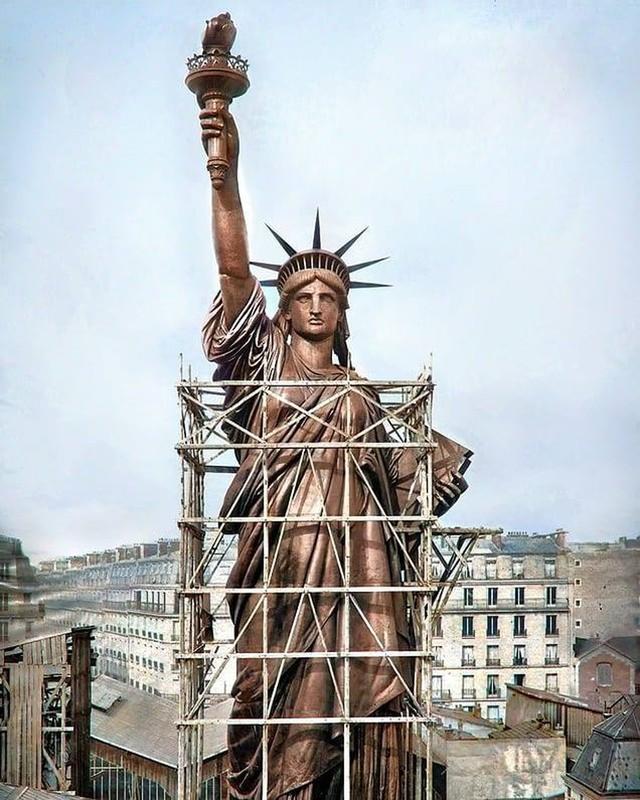
Wikimedia Commons
The statue of liberty, an iconic American landmark, has always captivated people worldwide. However, its current appearance, adorned in a sea green hue and overlooking Manhattan, is not how it has always been. Originally made of copper, the statue was assembled in various sections on Ellis Island. Over time, it began to oxidize, resulting in its stunning green color. When it was first completed in 1886, the statue gleamed with a brilliant shine that can never be replicated.
KJ Henderson’s Motorcycle: A Futuristic 1930 Steam-Driven Wonder

Pinterest
The 1930 Henderson Model KJ Streamline is undeniably a visually striking motorcycle, but unfortunately, it failed to gain the popularity it truly deserved. It is quite perplexing why numerous vehicles inspired by the Art Deco movement struggled to resonate with audiences, unlike the architectural designs of that era. The Model KJ Streamline’s enclosed bodywork gave it an otherworldly appearance, but during that period, motorcycle culture was shifting towards a more minimalist and open fender aesthetic. In an alternate timeline, this bike could have thrived and ignited a trend of these captivatingly futuristic motorcycles.
Rare and Exquisite Fragment of Fukang Meteorite Discovered in the Mountains of Fukang, China

Google
The Fukang Meteorite, discovered in China in 2000, is a stunning interstellar object found on Earth. It was stumbled upon by an anonymous hitchhiker near the town of Fukang in China’s northwestern region. Composed of Pallasite, this captivating celestial rock is characterized by its iron-nickel matrix with embedded olivine crystals. When illuminated from behind, slices of the meteorite resemble a beautiful stained glass window. The origins of Pallasite remain a mystery to scientists, but it is believed to have formed around 4.5 billion years ago.
Georges Fouquet’s Exquisite Fuchsias Necklace, Crafted in 1905, Stands the Test of Time

Pinterest
Georges Fouquet, a renowned French jewelry designer, crafted this captivating Art Deco necklace in 1905. He gained recognition for his intricate creations and established his own shop in the early 1900s, focusing on art nouveau necklaces like the one depicted here. Beyond being fashionable accessories, his jewelry is regarded as significant works of art. Many of his exceptional pieces are exhibited at the Metropolitan Museum of Art in New York City and the Petit Palais in Paris, France. For a glimpse into his craftsmanship, a replica of his shop can be found at the Carnavalet Museum in Paris.
Ladder 3 Arrived Early on September 11th, 2001 as One of the Initial Firetrucks

Reddit
On the morning of September 11, 2001, brave first responders rushed fearlessly into the chaotic and disorganized scene at the World Trade Center. Sadly, many of these courageous individuals did not survive. Among them was Captain Patrick Brown and his crew from Ladder 3, whose truck became a symbol of their bravery. As the North Tower crumbled, the front of the truck met a similar fate and was torn off in the collapse, remaining amidst the debris. Once the area was cleared, the truck was initially stored in a hangar at JFK International Airport before eventually finding its place in the Memorial Museum in 2011.
Mummified Monk’s Remains Discovered in 1,000-Year-Old Buddha Statue through CT Scan

Wikimedia Commons
During a CT scan of a statue of a sitting Buddha in the Netherlands in 2015, researchers were astonished to find something unexpected. Inside the statue, they discovered a mummified monk who had been preserved for a thousand years. Surprisingly, the monk was not placed inside the statue directly, but instead, the researchers found Chinese characters written on scraps of paper that filled the body. To achieve mummification, the monk followed a unique process involving a diet of poisonous tea, ensuring that the body would become toxic and ward off maggots. Although rare, the monks who successfully accomplished this feat were highly respected within their community.
American Sculptor, Chauncey Bradley Ives, Creates “Undine Rising from the Waters

Pinterest
This ethereal statue, crafted by 19th century artist Chauncey Bradley Ive, captures the essence of the mythological Mediterranean sea spirits who descended to Earth as lifeless beings. The fascination with Undines grew after the publication of Baron Heinrich Karl de la Motte Fouqué’s novel, Undine. In this tale, a water sprite assumes human form and attains a soul upon marrying a human knight. Tragically, when he betrays her, she is compelled to end his life. This sculpture portrays the pivotal moment when Undine emerges from the water to confront her husband.
One of the Most Contested Inventions of the 19th Century: The 1867 Sewing Machine
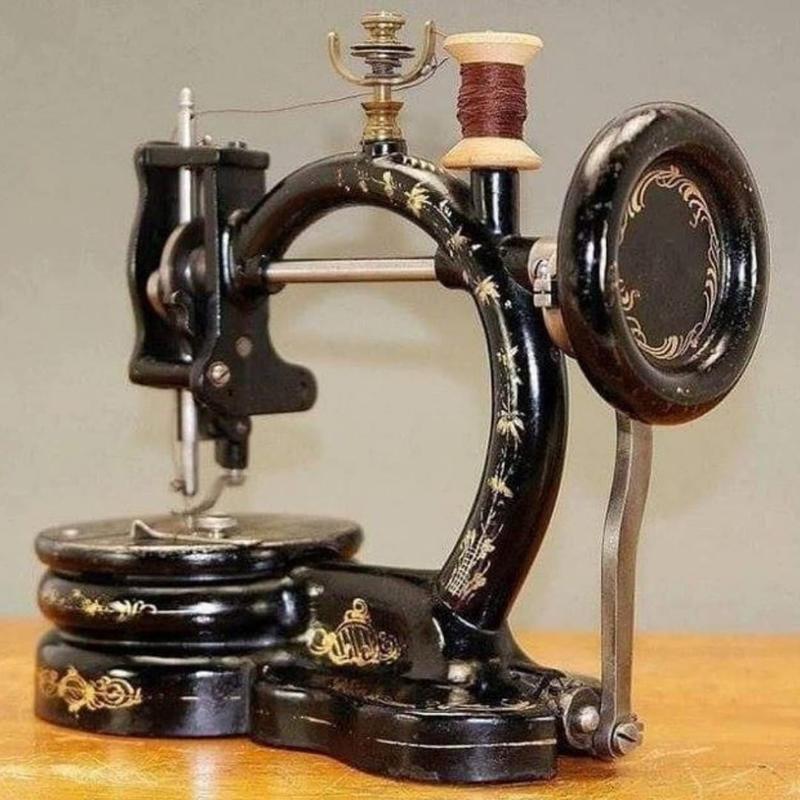
Pinterest
In his workshop on Amos street in New York City, Walter Hunt developed the sewing machine between 1832 and 1834. The initial version of the machine was manually built and featured a curved needle and shuttle to interlock a stitch using two threads. Throughout the next three decades, the sewing machine underwent numerous updates and modifications, revolutionizing fashion technology. Simultaneously, several designers attempted to obtain the first patent for the sewing machine, leading to numerous legal disputes. Surprisingly, this small machine became one of the most litigated tools in the 19th century.
Male suitor gifts one-of-a-kind watch to Marie Antoinette, Queen of France
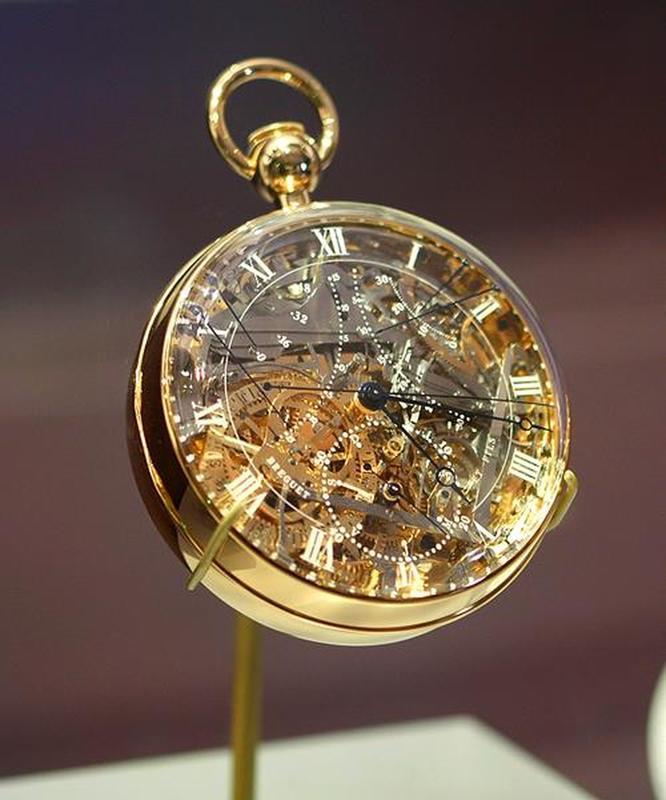
Pinterest
Commissioned in 1783 by a mysterious suitor, this pocket watch was designed to befit a queen. No expense was spared as the watch was adorned with intricate ornate details. Instead of using lesser metals, gold was used, making the timepiece cost over $30 million. This unique watch boasts an impressive array of features including a full calendar, a jumping hour hand, 23 complications, and a staggering 823 parts. With all its complexities, it is ranked as the fifth most intricate watch ever created. Tragically, Marie Antoinette never had the chance to receive this masterpiece as it was not completed until 1827, 34 years after her execution by guillotine.
1882 Diving Suit: Cool Yet Impractical
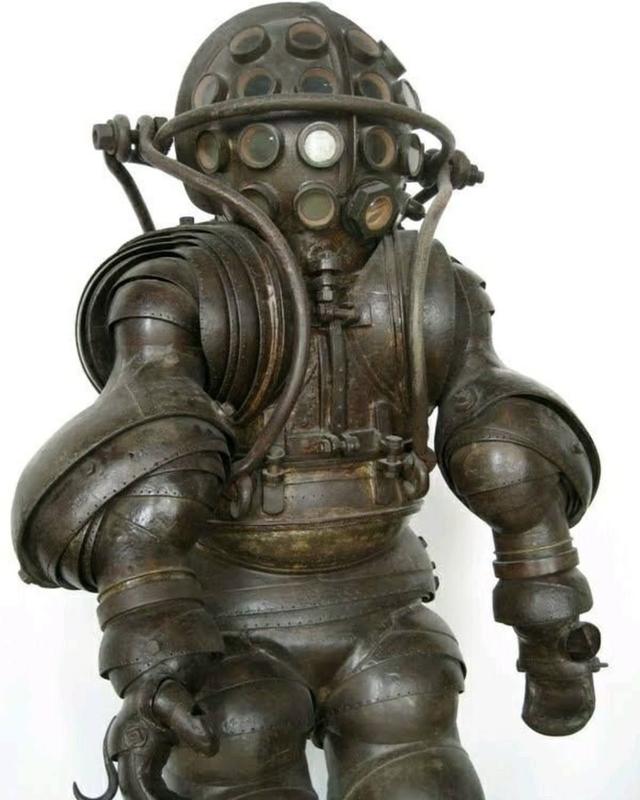
Google
Diving has made significant progress since the Victorian era, when researchers began using advanced technology to explore the depths. One notable invention was the 1882 design created by the Carmagnolle brothers of Marseilles, France. This groundbreaking suit featured 22 joints, enabling greater movement compared to previous designs. Additionally, the helmet boasted 25 individual 2-inch glass viewing ports, strategically spaced at the same distance as the human eye. However, despite these impressive features, the suit weighed over 800 pounds and was unable to be submerged without water leakage.
Prehistoric Inuits were the first to wear sunglasses
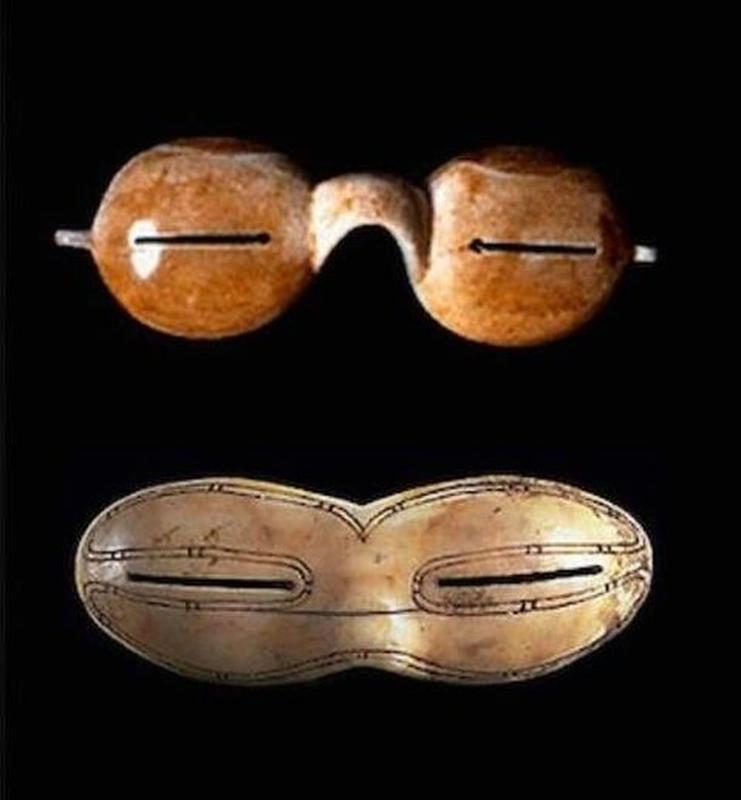
Wikimedia Commons
For generations, people have viewed the sun as a threat to vision. The Inuits were the first to utilize snow goggles over 4,000 years ago, as they often had to journey through snowy conditions. These early snow goggles effectively shielded the Inuits’ eyes from harmful ultraviolet light, preventing snow blindness. The Inuit people ingeniously hand-carved these goggles, incorporating tiny slits that allowed sufficient vision. Modern researchers are particularly amazed by the fact that these goggles do not fog up in polar conditions. However, it is important to note that these goggles significantly restrict the wearer’s field of vision.
American Civil War Surgeon’s Kit

Wikimedia Commons
In war zones, medics face numerous challenges when performing their operations. They work under extreme pressure and typically have limited equipment at their disposal. This is particularly true for medical professionals during the Civil War. Not only did they have to contend with scarce materials and medicine, but they were also operating in the midst of one of the bloodiest conflicts in history. While the photo depicts a well-stocked medical kit, it is likely that medics in the field had to make do with whatever resources they had. Hopefully, there was enough brandy available to alleviate some of the pain during surgeries, but if not, the procedures were bound to be excruciating.
Shoes from 2nd to 4th century discovered near Damendorf, Germany, belonged to bog body Damendorf Man
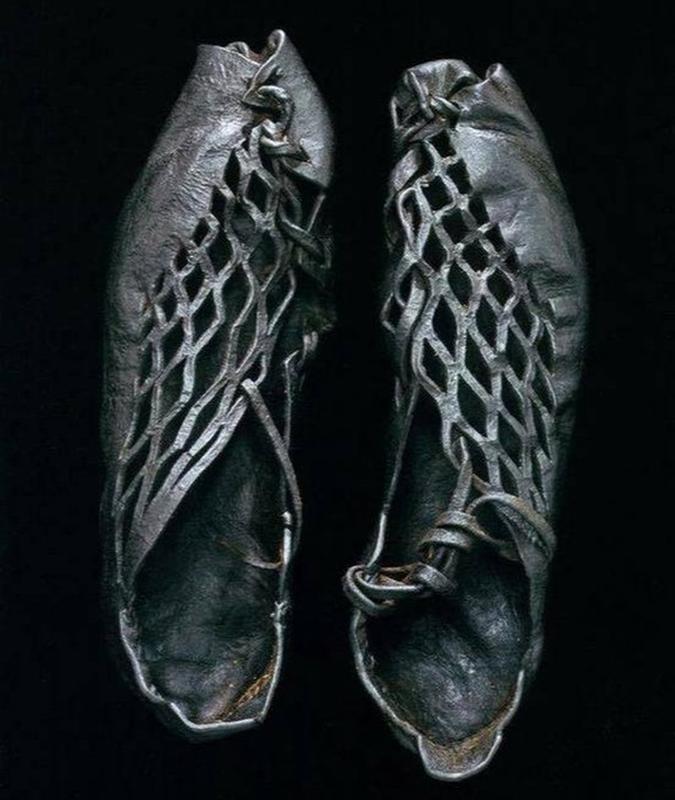
Wikimedia Commons
In the year 1900, a body known as Damendorf Man was discovered in the Seemor in Schleswig-Holstein, Germany. Due to the bog water, his bones were almost completely dissolved. Alongside his decomposed body, a collection of garments, such as these shoes, were found. The bog man’s shoes were wrapped together with a leather belt, inside a pair of accompanying breeches. Surprisingly, these shoes and other items were remarkably well-preserved, leading to further research of the bog where multiple human remains have been uncovered. Strangely enough, these shoes bear a striking resemblance to the footwear that we wear today.
1904: Enormous Spider Crab Emerges from Japan
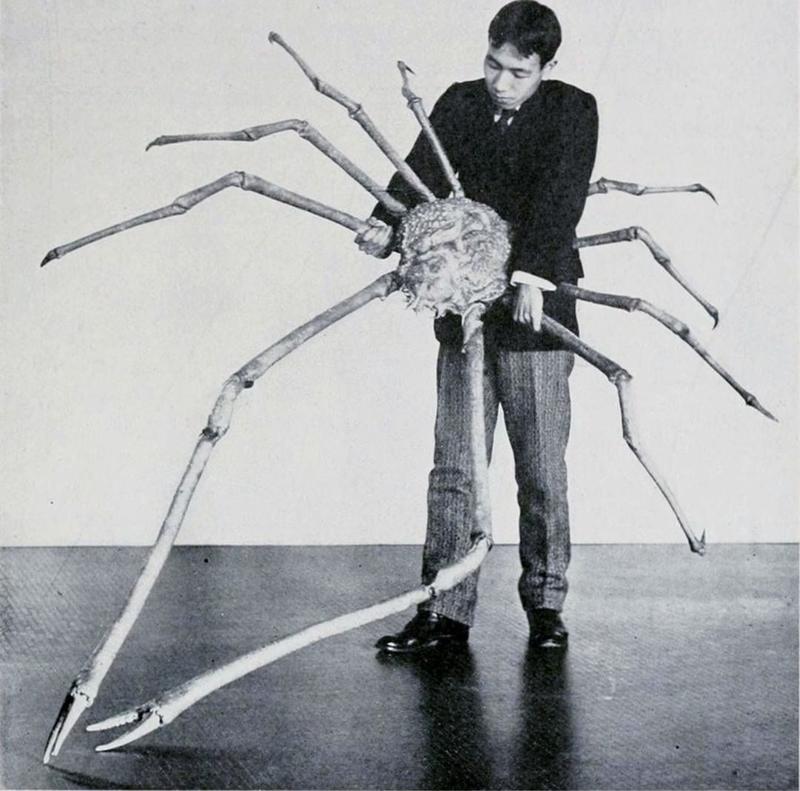
Wikimedia Commons
These enormous spider crabs may resemble creatures straight out of a 1950s B-Movie, but they are indeed authentic. These crustaceans inhabit the waters surrounding Japan and possess the lengthiest leg span of any arthropod. Valued as a delicacy, the legs of a Japanese spider crab can extend up to 18 feet, while the crab itself can weigh up to 42 lbs. These crabs are not commonly sighted as they reside in deep ocean holes, yet they can still be captured when they venture out in search of sustenance. Unfortunately, their population has dwindled due to excessive fishing activities.
France’s Château de Chantilly boasts an incredible wrought iron railing.
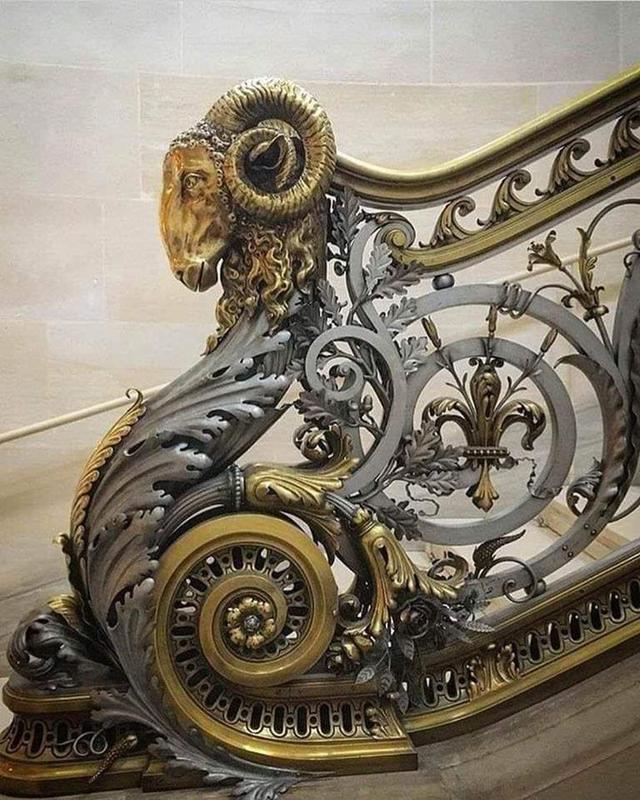
Reddit
Located in Chantilly, France, just north of Paris, the town is home to the Château de Chantilly. This picturesque area consists of the Petit Château, constructed in 1550, and houses the Musée Condé. Following its destruction during the French Revolution, the estate underwent meticulous reconstruction, resulting in its breathtaking and intricate architecture. Nowadays, the château serves various purposes and has hosted a range of events, from the Molteni Campagnolo cycling team to a memorable performance by David Gilmour from Pink Floyd. Thanks to the generous support of the World Monuments Fund in 2008, the Grande Singerie has undergone a complete restoration.
Musical Notation Made Easy: Explore a Rare Keaton Music Typewriter with Circular Keyboard and 33 Keys
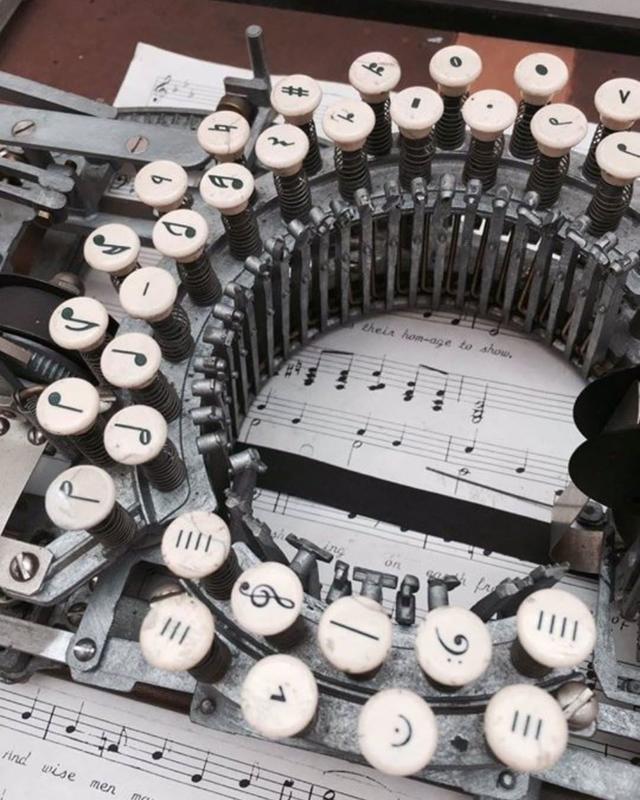
Reddit
The Keaton Music Typewriter was first patented in 1936 and originally had 14 keys. However, it was later updated in the 1950s to include 33 keys. To use this typewriter, one would place a sheet of paper beneath the typing mechanism before starting to type. Although these machines may appear complex, they actually made writing sheet music somewhat easier. Nevertheless, the typist had to be extremely cautious to avoid needing to start over with a fresh sheet of paper. Additionally, the musical typewriter had three space keys that allowed the user to move the typehead to different units for various purposes.
19th Century Russian-Made Rocking Chair: Exquisitely Carved from Wood

Pinterest
Skeleton rocking chairs may seem morbid, but they offer exceptional comfort due to their meticulous craftsmanship using exquisite pieces of wood. These handmade furniture items are built to withstand the test of time, making them a long-lasting investment. With price tags reaching thousands of dollars, these unique creations can fetch even higher amounts at certain auction houses. Inspired by a 19th-century design, the newer iterations of these chairs stand at approximately 54 inches tall. They feature intricate carvings that create the illusion of sitting in a skeleton, adding a spooky touch. While these chairs cater to individuals with a gothic taste, potential buyers should be prepared to explain their eccentric choice to their friends.
A Timeline of Pepsi Cans: A Sugary Journey

Reddit
Soda can designs, including those of Pepsi, are subject to change as designs and tastes evolve. Among the various designs throughout the 20th century, Pepsi’s can from 1978 stands out as iconic. What makes Pepsi’s design fascinating is the drastic transformation it has undergone since its initial version. In the beginning, Pepsi was packaged in peculiar small bottles resembling oil cans. However, in 1959, the can took on a form reminiscent of ribbon candy. Nevertheless, it is undeniable that the cans from the 1970s hold a special appeal.
Jack Daniel, iconic whiskey distiller, tragically passes away after attempting to unlock safe and kicking it due to forgotten combination

Pinterest
What a tragic demise it was. On October 9, 1911, in Lynchburg, Tennessee, an esteemed figure in American industry met his untimely end at the hands of his own safe. However, there was no dramatic collapsing of the safe or failed dynamite explosion. Instead, he fell victim to his own desperation to retrieve some important documents locked inside. Without the combination, Daniel resorted to futilely kicking the safe, resulting in nothing but an infected and agonizing big toe. Sadly, this infection escalated into gangrene, spreading throughout his entire body. Fortunately, he had enough time to transfer his business responsibilities to his beloved nephew, Lem Motlow, before succumbing to the complications caused by his infection.
In 1845, Bernhardt Otto Holtermann proudly displays a 630-pound gold nugget in Hill End, New South Wales
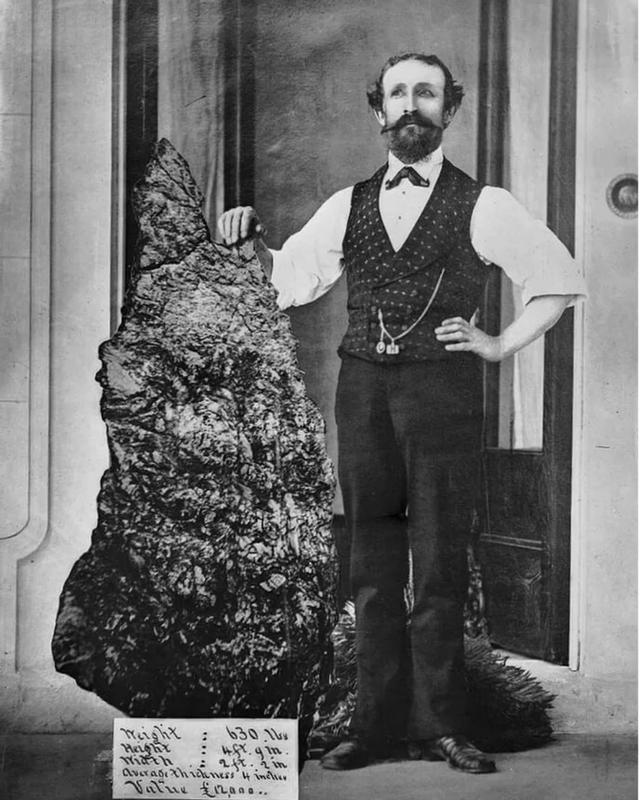
Wikimedia Commons
Bernhardt Otto Holtermann, born in 1838, was a prospector who possessed a portion of an Australian claim where valuable gold veins were eventually discovered after countless futile attempts. Originally from Germany, Holtermann embarked on a journey to Sydney, Australia to avoid being enlisted in the military. Despite enduring years of unsuccessful digging, he encountered a mishap one year when he accidentally detonated a premature explosion of blasting powder, resulting in injuries. Prior to his election as a member for St Leonards parliament in 1882, an unidentified photographer captured the iconic image of Holtermann standing beside a colossal “nugget”. Unfortunately, Holtermann’s life was cut short at the age of 47.
1930s Baby Rattle with an Eerie Vibe

Pinterest
Imagine considering it acceptable to give this to your child. During the 1930s, it was common for kids to be given such items, regardless of the fact that it frightened them or posed a risk of choking. These rattles, manufactured from lucite, served as suitable teething materials, despite their eerie appearance that seemed capable of causing chaos during the night. Toys from that era were not easily obtainable, mainly due to the Great Depression and the high cost associated with these particular items. As more affordable alternatives, some were constructed from cloth or corn cob.
Original Case Holds Victorian Butterfly Brooch

Pinterest
The popularity of jewelry has been enduring, but it was during the Victorian era that styles began to diversify, with new fashion trends emerging in the last five decades of the 19th century. The Romantic Period, spanning from 1837 to 1860, saw a rise in the popularity of stones, particularly due to the serpent ring that Prince Albert gifted Queen Victoria, which featured birthstones. During this era, the prevailing colors were feminine and intricate, with turquoise being the color of choice. Jewelry designs were often simple yet adorned with floral motifs, such as this butterfly brooch. Simultaneously, the industrial revolution was in full force, making these pieces of jewelry more affordable for a wider range of people.
Rare 16th Century Gold Sundial and Compass Ring Discovered
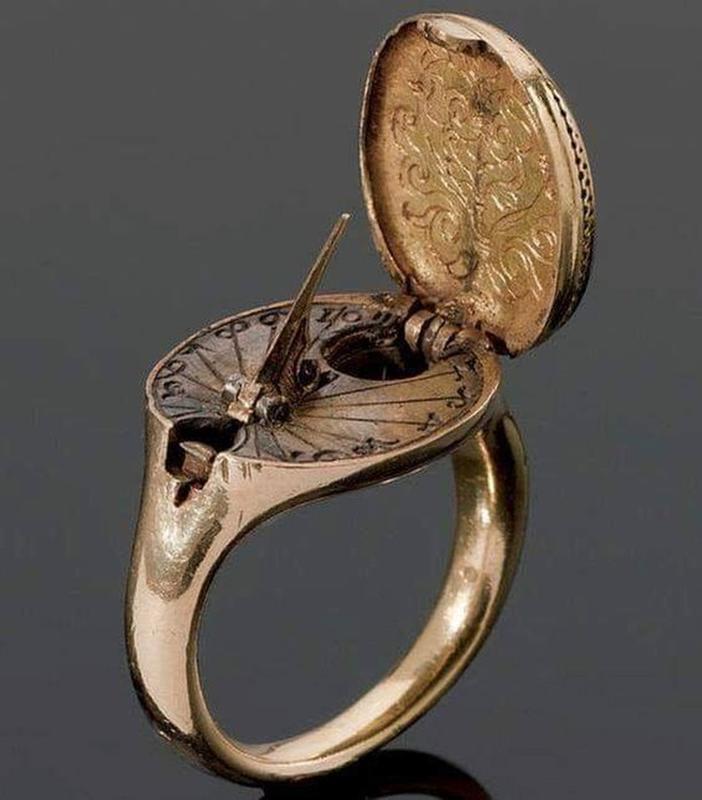
Wikimedia Commons
If you needed to know the time in the 16th century, checking your calculator watch wasn’t an option. Instead, people relied on the sun. Those with some extra money could buy a sundial ring like this one. This small timekeeping device was created because people in that era had a keen interest in the natural sciences and enjoyed using natural methods to accomplish tasks, such as determining the time and date. The ring is adorned with an engraved coat of arms and has an opening that reveals the sundial and compass.
Thousands of volumes bound in white pigskin grace the library housed within Bavaria’s Waldsassen Abbey.

Reddit
Waldsassen Abbey appears as a typical convent from its exterior – a stunning baroque church constructed with massive stone pieces. However, internally, the abbey reveals itself as a splendid and contemporary masterpiece. Established in 1133, it initially served as an exclusively male monastery until 1803. The library showcases meticulously carved shelves adorned with numerous books, bound in both white pigskin and dark calfskin. Some columns are intricately shaped like grotesque figures, distorted by their sins. Moreover, by lifting one’s gaze towards the ceiling, one can admire a painted ceiling that was completed during the 1700s.
Royal and Fashionable: King Tutankhamun’s Sandals
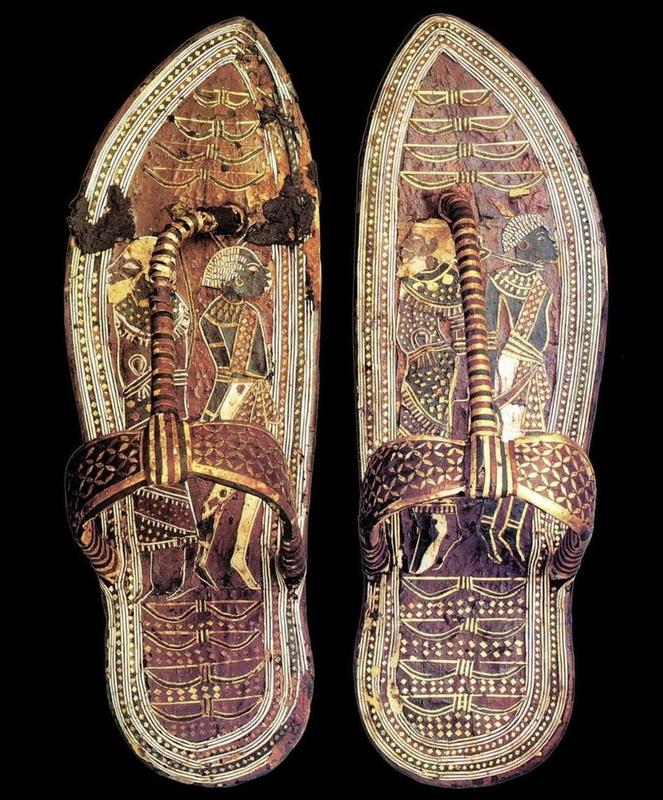
Reddit
When considering ancient Egypt, our minds often gravitate towards the iconic pyramids and mummies resting in sarcophagi. However, this time period offers much more depth than these well-known facts. Surprisingly, the sandals worn by King Tut reveal that the people of Ancient Egypt shared similarities with modern-day individuals beyond our wildest imagination. Not only did they don shoes resembling those we wear today, but they also possessed a keen interest in fashion. André Veldmeije, a renowned expert in ancient footwear, debunked the common misconception that sandals were flimsy and that most people went barefoot. He shed light on the vast variety of footwear in Ancient Egypt, some of which are not even depicted in art but only known through archaeological discoveries.
Riding in Style: Introducing the Sleek 1967 Stingray Jet Boat Hybrid

Reddit
An even cooler version of a ’67 Stingray is a boat version. Converting a beloved car into a watercraft requires a deep affection for the vehicle and a solid understanding of automotive design. The creator of this unique Stingray boat seems to have removed the car’s roof and affixed it onto a fiberglass boat bottom, meticulously sanding and matching the color for a seamless finish. Alternatively, they might have skillfully transformed their car into a boat. Regardless of the method, cruising on the water in this creation must be a delightful way to spend an afternoon.
Archaeologists Make Remarkable Discovery: Thracian Carriage and Two Horses Found Buried Vertically

Google
The way things occurred in ancient Bulgaria may be difficult to perceive. In the year 2013, archaeologists made a remarkable discovery in the village of Svestari, located in north-east Bulgaria. They uncovered an intact carriage that was accompanied by the skeletons of two whole horses. The carriage, including all four wheels, seat, and boot, is believed to have belonged to a member of the Thracian nobility. The horses were likely led through a narrow opening and euthanized before being buried. This discovery is truly unique, and it is improbable that archaeologists will ever come across anything as well-preserved.
Wreckage of a Kittyhawk P-40 Discovered in Sahara Desert in 2012

Wikimedia Commons
The Curtiss P-40 Kittyhawk, a British variant of the American Tomahawk fighter plane, was introduced during World War II. Powered by an Allison in-line piston engine, the P-40 had a top speed of 378 miles per hour. Although it could reach an altitude of 15,000 feet in just over six minutes, the plane had a limited range of 240 miles, making it primarily used for defense. In June 1942, Flt Sgt Dennis Copping, a 24-year-old pilot, crashed his Kittyhawk in the North African desert, approximately 200 miles away from the nearest town. The aircraft remained undisturbed until it was stumbled upon by a Polish oil company worker in May 2012. The fate of Sgt. Copping remains unknown.
Allied spies during World War II used shoes to mislead their adversaries

Google
During World War II, individuals spying for the allies faced the daunting task of avoiding detection by the Nazis while gathering Axis secrets. In addition to taking extraordinary measures to conceal their identities, such as carefully selecting clothing that didn’t give away their English origins, they occasionally had to rely on clever footwear like these trick shoes to confuse Nazi forces. These shoes functioned in a manner similar to those used by moonshiners during prohibition, presumably serving as inspiration. By having the soles face the opposite direction of their actual movement, anyone attempting to track their footsteps would be led to believe that the wearer was approaching them rather than retreating.
1968 Arcade Displays a Line of Pinball Machines

Reddit
The initial pinball machines were truly magnificent. They demanded considerable skill to sustain gameplay for an extended period. At first, the flippers were positioned outwardly, making the game extremely challenging. This only fueled the determination of young individuals to unravel its secrets. Consequently, children relished hours of amusement while arcade proprietors reaped substantial profits. Following World War II, manufacturers such as Gottlieb started producing games with inward-facing flippers positioned closely together, giving birth to the familiar style of pinball we know today. Numerous collectors regard these machines as the epitome of classic pinball.
Steamer trunk from the late 1800’s ingeniously transforms into a standing dresser, eliminating the need for unpacking while traveling

Pinterest
Have you recently embarked on a lengthy journey? Did you find it challenging to pack your belongings efficiently? Wouldn’t it have been more convenient to bring everything you own, eliminating the need for selecting what to bring? Steamer trunks were the ideal companions for individuals undertaking long-distance trips or extended voyages. They were specifically designed for those who were either permanently relocating or embarking on an extensive journey. These trunks featured compartments for personal items like undergarments and toothpaste, as well as larger sections for bulky clothing such as coats and thick pants. Although they gained popularity during the Victorian era, their timeless appeal transcends any specific time period.
1905 fireman’s bicycle undergoes stunning restoration
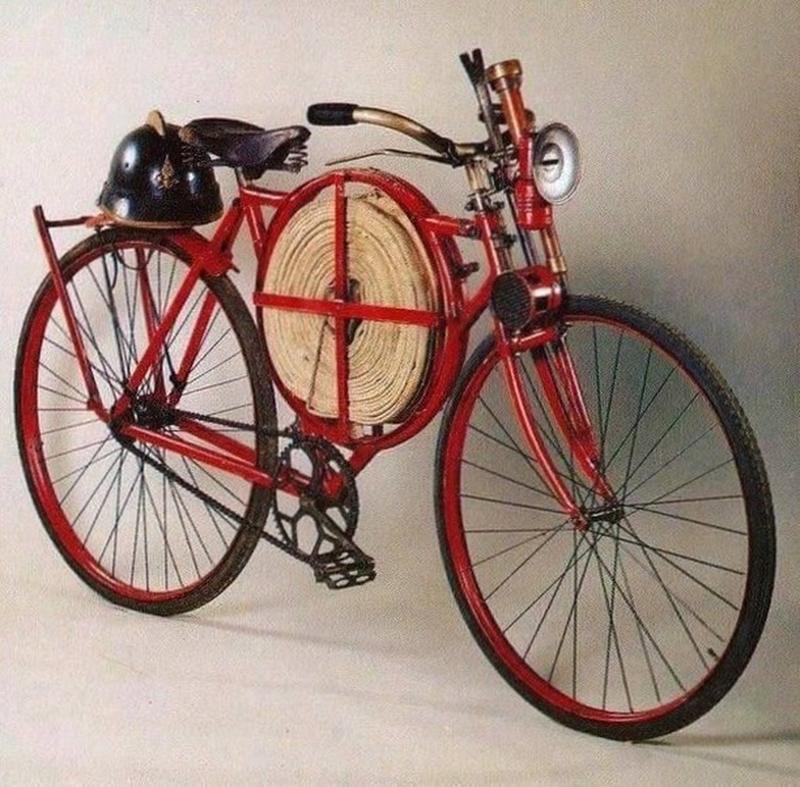
Google
In the past, firefighters did not drive large trucks like they do now. During the turn of the century, some firefighters were assigned to patrol on bicycles that had their own hose which could be attached to a water source. These bicycles also had compartments for a crowbar to access buildings and a flashlight for navigating in the dark. According to online sources, these bikes were manufactured for firefighters by Birmingham Small Arms in Great Britain. It would be incredibly exciting to have one of these bikes for a summer ride, although one should be careful not to be confused for an actual firefighter.
1930s brings a one-of-a-kind art deco desk fan
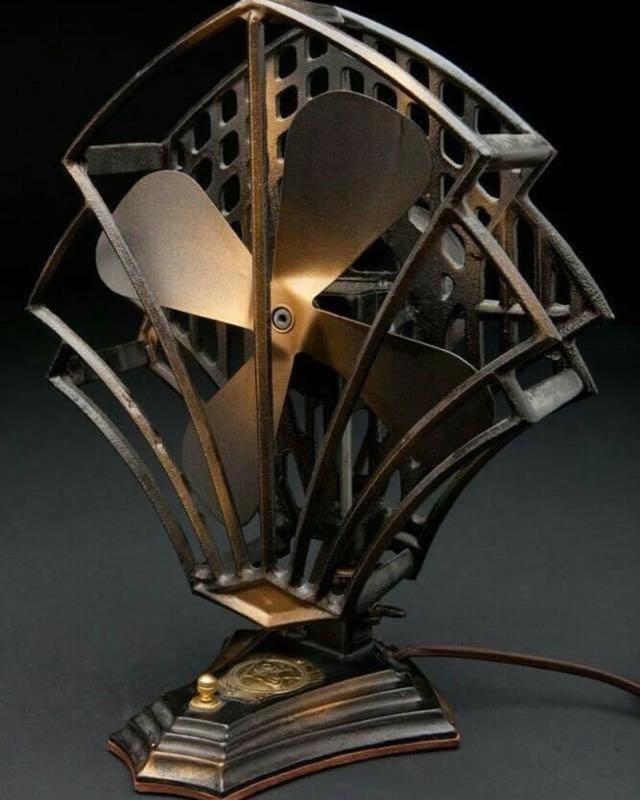
Pinterest
This Art Deco fan, dating back to the 1930s, is a coveted find at flea markets. Its rarity as an electrical architectural piece makes it comparable to finding a needle in a haystack. Although not every fan or small electrical device from that era possesses the same intricate design, owning this particular one would be incredibly cool. It exudes an era-appropriate charm that is truly inspiring. It evokes a longing for a time when one could sit down at a typewriter on a scorching summer day, simultaneously cooling off and getting work done.
Antoine Fraveau met his tragic end at the Battle of Waterloo in 1815 while wearing this breastplate, fatally struck by a cannonball.
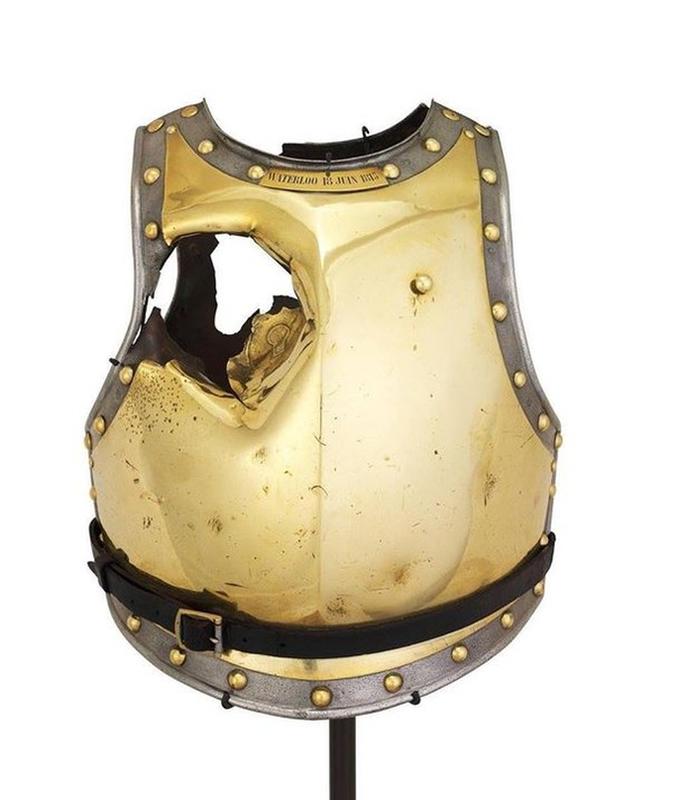
Google
Antoine Fraveau, a young man at the time, served alongside Napoleon during one of the conflicts at Waterloo. He donned a striking golden breastplate, a crucial piece of armor in the 19th century that offered protection against blunt weapons and, to some extent, sword strikes. However, it proved defenseless against cannonballs. Tragically, in 1815, Fraveau fell victim to cannon fire, just as he was on the brink of entering into marriage. This breastplate serves as a poignant testament to the brutal nature of the Napoleonic Wars.
Late 1500s Germany Produced This Small, Elaborately Designed Ax

Reddit
The axe’s craftsmanship is truly inspiring, evoking a nostalgic longing for the days when blacksmiths dedicated their time to creating tools as works of art. While this short handled axe serves various purposes, such as chopping or throwing, its ornate design suggests it was primarily used for decoration. It’s fascinating to imagine wielding such a beautiful weapon in battle, but the risk of losing it is high. If one were to use it, it would likely be in close combat, although there are likely more suitable tools for that particular task.
The Natural History Museum in London offers days of exploration
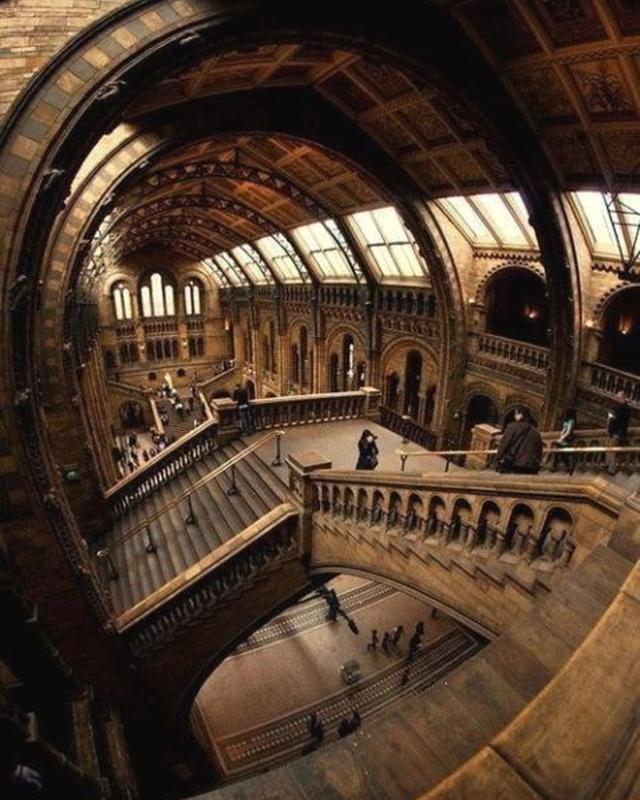
Google
Whether you are a tourist in London or a local resident of England, a visit to the Natural History Museum is guaranteed to be a captivating experience. Boasting a staggering 80 million specimens across five main collections, this research center is dedicated to taxonomy, identification, and conservation. The significance of the museum lies in its remarkable dinosaur skeletons, intricate architecture, and the awe-inspiring sight of a blue whale skeleton suspended from the ceiling in the grand central hall. What’s more, entry to the museum is completely free, adding to its appeal. It’s impossible not to get lost in the enchanting corridors of the Natural History Museum.
American inventor Buckminster Fuller’s 1938 Dymaxion, featuring a futuristic appearance

Pinterest
The 1938 Dyamoxion, designed by Buckminster Fuller in 1933, had a futuristic appearance that seemed out of this world. At one point, there was a belief that this unique vehicle would become the norm for transportation in the 21st century. Fuller coined the term “dymaxion” by combining dynamic, maximum, and tension, giving it a cool and catchy name. The initial model of the car was handmade and intended for exhibition at the 1934 Chicago World’s Fair, but unfortunately, it was involved in a collision during transportation. Despite this setback, Fuller eventually constructed three more versions of the car, but they failed to gain popularity. Presently, one of the remaining three resides in a museum in Reno, Nevada, while the others are owned by private individuals.
Statue of Liberty’s Arm and Torch Stand Tall in Madison Square Park, New York City
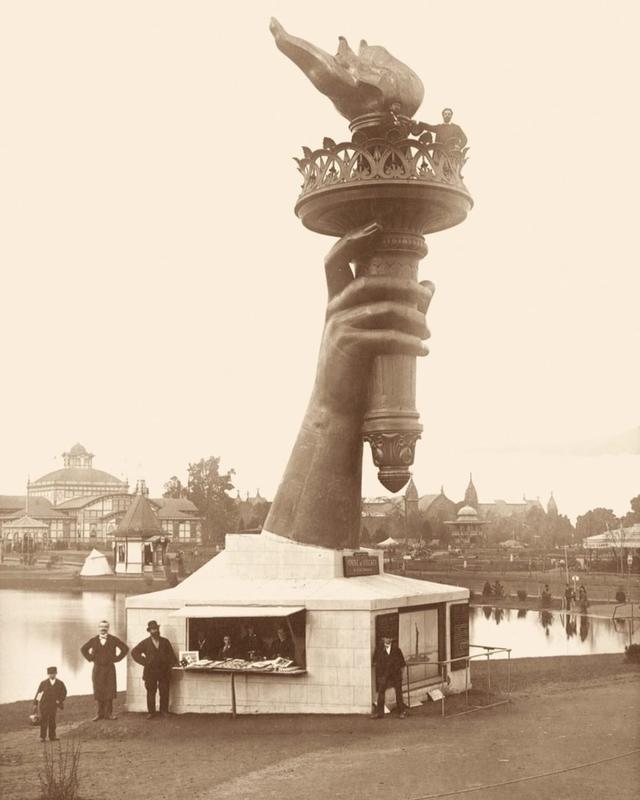
Wikimedia Commons
When we gaze upon the Statue of Liberty today, it may appear as if it was simply transported from France in its current form. However, this is far from the truth. The statue was actually constructed in separate pieces during the late 19th century, and these parts were then brought over to America gradually. They resided in various locations across the country until designer Eugène Emmanuel Viollet-le-Duc and his student Frédéric Bartholdi managed to gather enough funds to complete the project. It is worth noting that from 1876 to 1882, the statue’s arm was situated in New York City’s Madison Square Park, a sight that surely caught the attention of anyone enjoying a picnic.
Experience luxury in this vintage hearse straight from Dresden, Germany

Reddit
The hearse from Dresden is truly exquisite in its appearance. It showcases an ornate design that was commonly seen during the Victorian era, but this particular hearse goes above and beyond. Its intricate carvings of angels and glass door set it apart from the typical burial market offerings, adding to its allure. Unfortunately, there is no information available online regarding its construction or the identity of its driver and owner, leaving them as mysterious figures. Undoubtedly, this hearse must have been highly coveted, as it embodies the desire to bid farewell to loved ones with elegance and sophistication in this stunning carriage.
Lawrence of Arabia’s Ambush on Ottoman Supply Train Leaves Hejaz Railway Unchanged Since World War I

Wikimedia Commons
T.E. Lawrence, popularly known as Lawrence of Arabia, accomplished numerous acts of bravery during World War I. However, one particularly inspiring feat emerged from his service in the Middle East in 1917. Together with a group of Arab followers, Lawrence commenced a mission to sabotage the Ottoman supply chain by targeting and overthrowing trains. Their relentless efforts proved highly successful, resulting in the destruction of countless trains and railways, rendering them unusable. The Turkish people, instead of relocating the abandoned trains, opted to abandon them in the desert.
Remarkable craftsmanship showcased in 18th century carved door found in Germany
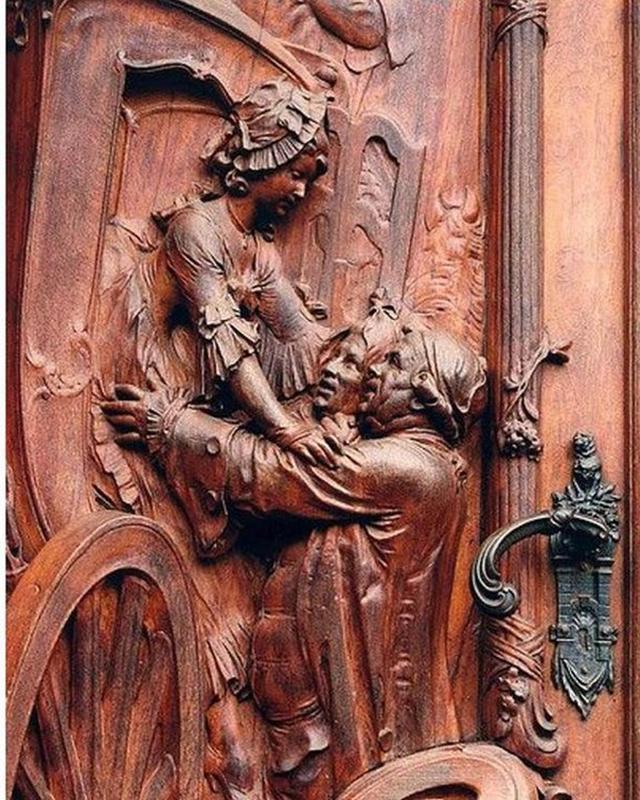
Pinterest
Throughout history, woodworking has played a crucial role in the lives of both commoners and nobles. Regardless of social status, everyone requires doors for shelter. However, as time passed, woodworking evolved from a mere functional necessity to an intricate craft. Skilled artisans dedicated countless hours to create exquisite pieces of furniture that not only provided protection but also showcased artistic beauty. The German people have always had a deep appreciation for woodworking, and their influence can be observed in the designs of colonial American furniture. This influence stems from the significant number of German immigrants who migrated to the United States in its early years.
Rare 1939 Duesenberg Coupe Simone Midnight Ghost
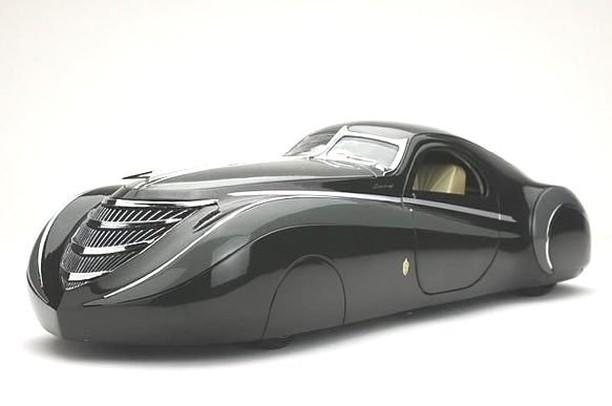
Pinterest
The “Midnight Ghost” is a captivating car that pays homage to the Art Deco movement of the early 20th century. It took a remarkable three years to manufacture this stunning vehicle, and upon its completion in 1939, it was christened the “Duesenberg Coupé Simone Midnight Ghost.” Being the longest car ever produced by Dussenberg, it also marked the end of their production line. Although not economically viable, this car undeniably exudes beauty. Its owner, the brilliant perfumer Gui De LaRouche, was dissatisfied with the original gray on gray paint job and decided to have it repainted in a regal shade of purple. Tragically, the car was lost during World War II.
300-Year-Old Tibetan Skull Carved with Intrigue
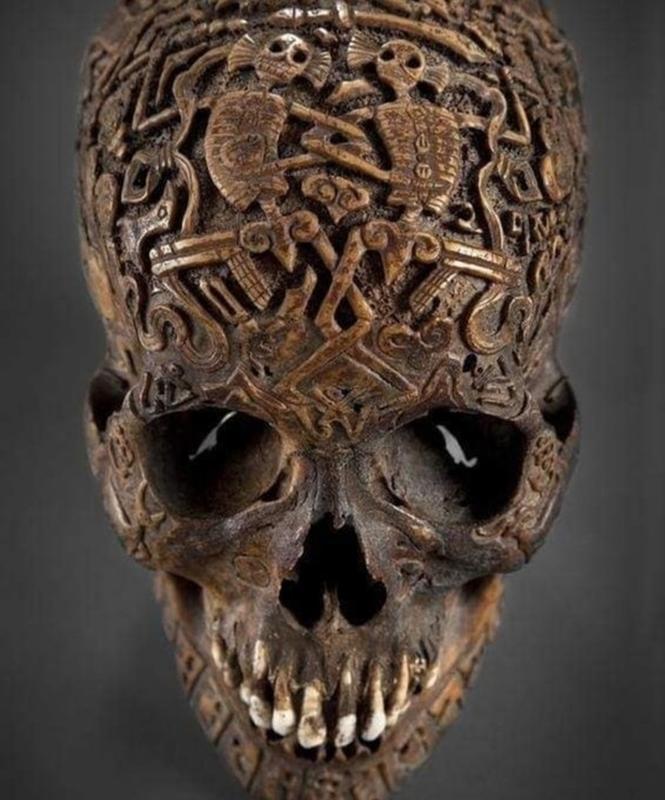
Reddit
In 2011, an intricately carved skull was discovered in an antique shop in Vienna. According to the man who sold it to an Austrian shopkeeper, the skull is believed to be 300 years old and belonged to a Tibetan man. Allegedly, this man provided medical assistance to Tibetan monks, although the authenticity of this claim remains uncertain. Researchers have examined the skull and identified a script known as lant’sa or the 7th-century Indian script ranja covering its surface. However, due to the lack of information regarding the origin of the skull, translating the letters remains impossible.
1970s 8-track cassette radio with a groovy vibe

Reddit
Before 1965, if one desired to enjoy music while driving, they had to possess a substantial amount of money to match the wealth of rock stars, in order to install a record player in their car. However, even with this installation, the listening experience was far from ideal due to constant sniping and scratching. In a breakthrough move during 1965, Ford Motor Company introduced optional 8-track cartridge players in their more athletic car models. In response to this demand, RCA released their entire collection on these cartridges. These 8-track cartridges, developed by the Lear Jet Corporation, responsible for the private jet industry, revolutionized the music listening experience. It provided people with the opportunity to enjoy their favorite tunes without having to purchase LPs or wait for them to be played on the radio.
Original: Spirographs brought hours of fun but they were created for a very different reason Rewritten: While Spirographs provided endless entertainment, they were originally invented with a distinct purpose

Google
As children, we all have cherished memories of playing with a Spriograph. While some were forbidden from using it outdoors due to its messy nature, fortunate kids with parents who had a room in desperate need of a fresh coat of paint were allowed to spend their days Spirographing indoors. Interestingly, although we commonly associate the Spirograph with the 1960s, its origins trace back to 1827 when architect and engineer Peter Hubert Desvignes invented it. Initially, the Spirograph was designed as a tool to produce intricate spiral drawings and prevent counterfeit bank notes. Over the course of 150 years, the toy has certainly undergone significant transformations.
Triple-decker bus explores the roads of Berlin, Germany

Google
Consider the possibility of an extraordinary public transportation system where people commute on triple-decker buses. Although this concept seems incredible, it remains purely fictional. In reality, double-decker buses first emerged in 1923, and despite the existence of various images depicting triple-decker buses, they are merely products of imagination. The closest the world ever came to a triple-decker bus was a double-decker bus with an additional bubble-like third layer, which began operating in 1932 between Rome and Tivoli. This unique bus had the capacity to transport up to 88 passengers. However, as captivating as the featured photo may appear, it is important to acknowledge that such a bus does not exist in the real world.
Bread with baker’s stamp from 79 AD Pompeii discovered, still carbonized

Wikimedia Commons
The eruption of Mount Vesuvius in 79 A.D. completely devastated the village of Pompeii. Despite the destruction, numerous homes, people, and artifacts were remarkably preserved beneath a thick layer of ash. Among these preserved items is a round and dense loaf of freshly baked bread, which is divided into eight pieces. Astonishingly, the loaf even bears the imprint of the baker’s stamp, which reads: “Celer, slave of Quintus Granius Verus.” The existence of this artifact is truly miraculous. One wonders if it still retains its original taste.
Growing up, the Lite-Brite was a source of endless entertainment

Reddit
In 1967, Hasbro launched the Lite-Brite, a toy that captured the imaginations of countless young individuals. This innovative toy allowed kids to create designs on a backlit board, offering the option to follow pre-designed templates or unleash their creativity and make unique light-up artwork. It was especially enjoyable to gather with friends on rainy days, plugging in clear plastic pegs into the black sheets of paper and switching on the backlight. Even when the batteries eventually drained and the lights faded, Lite-Brites never failed to maintain their cool appearance.
1890 brings enchanting silver ice cream spoons with a whimsical touch

Pinterest
Who doesn’t appreciate the charm of a beautiful spoon? While indulging in a delectable scoop of ice cream, it is always delightful to behold an intricately designed and whimsical utensil. These spoons originated during the Victorian era, a time when every object was adorned with an extra touch of intricacy. The shell pattern on this particular spoon may not serve a practical purpose, but it adds a playful element to the experience. These spoons bring a sense of lightheartedness to an already enjoyable dessert, embodying the spirit of the Victorians. After all, who can resist the allure of a delightful little spoon?
Vivien Leigh’s iconic ‘Gone with the Wind’ costume from 1939 is up for grabs.

Pinterest
Gone With The Wind, a film from the 20th century, is incredibly memorable. It features fiery scenes, distinctive southern accents, and stunning costumes. The costumes worn by Vivien Leigh, created by the talented Walter Plunkett, are particularly noteworthy. They are adorned with intricate stitching, elaborate seams, and beautiful embellishments like rope sashes, peacock feathers, and tiny hats. It is evident that these costumes were the work of a genius. Sadly, only a small number of the original costumes have survived since the film’s completion. However, these surviving gowns have been showcased in various exhibitions over the years, and they are truly worth experiencing in person.
Wooden dragon bench carved with a chainsaw by talented German artist Igor Loskutow

Pinterest
The chainsaw is not typically associated with precision cutting, but for Estonian artist Igor Loskutow, it is a cherished tool. As a member of the Husqvarna chainsaw sculpture team, Loskutow travels throughout Europe, showcasing his unique talents. The remarkable dragon bench he carved, with its intricately designed head and tail wrapping around the sitting area, demonstrates his exceptional skill and elegance. This masterpiece was honored with top recognition at the 2015 Huskycup World Title, a well-deserved accolade for Loskutow. In 2017, he embarked on a similar project, utilizing contrasting woods to create a fiery effect.
Is there really a tree growing through an abandoned piano?

Pinterest
The mysterious piano tree has always puzzled those who have seen it. Was it accidentally left in the middle of the woods, allowing a tree to grow through it? Or was it intentionally cut in half and placed around the tree for added oddity? Located in the woods near California State University, Monterey Bay, the tree’s origin offers a clue to its creation. According to the story, a college student named Jeff painstakingly placed the piano around the tree, a task that surely required considerable effort. Regrettably, the piano is no longer positioned around the tree.
U-238 Atomic Energy Labs: Marketed as a Toy for Kids, it Included Live Uranium Ore and a Geiger Counter in Three Varieties

Pinterest
In the 1950s, no problem seemed insurmountable thanks to the incredible power of the atom. Alfred Carlton Gilbert, an American inventor and magician, capitalized on this fascination by creating an educational toy called the Gilbert U-238 Atomic Energy Lab. Despite its alarming feature of containing real uranium, Gilbert reassured potential buyers that there was nothing to fear. Priced at just $50, the Atomic Energy Lab included a cloud chamber that allowed children to observe alpha particles moving at a remarkable speed of 12,000 miles per second. Truly an extraordinary offer.
Inside view of the face of the Statue of Liberty
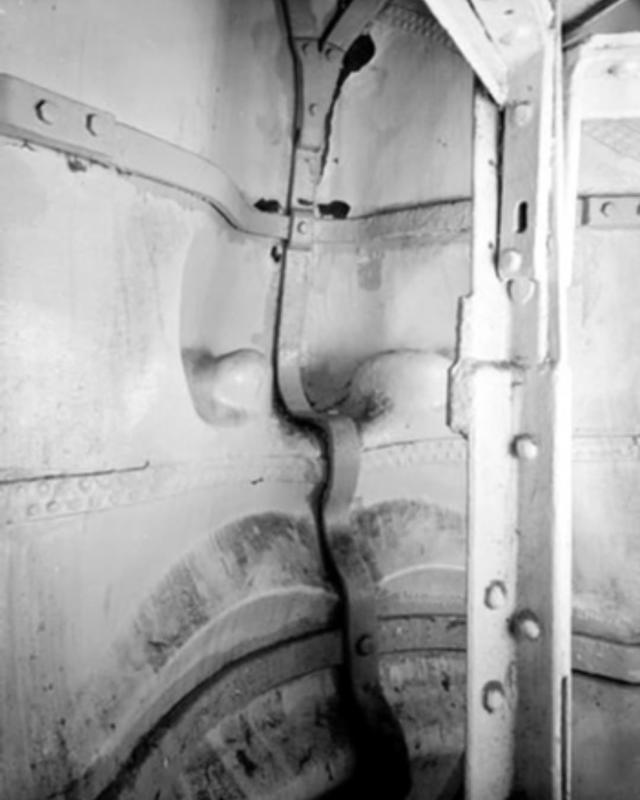
Google
The Statue of Liberty appears as a radiant symbol of liberty in its sea foam green exterior. However, the interior tells a completely different tale. The contrast between the meticulously crafted outer appearance, depicting a magnificent woman holding a torch for liberty, and the inner part is striking. Inside, it is composed of hammered metal, wrought iron beams, and rivets. To ensure the statue’s structural integrity, it is reinforced with crisscrossed saddles and armature bars that bear no resemblance to its beautiful exterior. It is difficult to fathom that the interior and exterior belong to the same entity.
Austria’s Benedictine Monastery of Admont unveils its awe-inspiring library

Pinterest
The library in the Benedictine Monastery of Admont is not just any library; it is the largest in the world. Its astonishing architecture and vast collection make it truly exceptional. Established in 1764 and completed in 1776, this library houses an array of treasures, including sculptures, manuscripts, and printed works. One of its most remarkable features is the set of seven ceiling frescos painted by Bartolomeo Altomonte, an 80-year-old artist at the time, over two summers. These frescoes depict the various stages of human understanding, from thought and speech to Divine Revelation. Adjacent to these stunning paintings, visitors can find the monastery’s collection of different Bible versions and the works of the Church Fathers.
Cigarettes and gum were part of breakfast rations during World War II

Wikimedia Commons
During World War II, soldiers did not eagerly anticipate their lunchtime meals. Instead of enjoying a satisfying break, they had to rely on K-rations, which provided some reminders of home but fell short of fully satisfying their hunger. Nevertheless, there were some intriguing items included in these rations. Typically, soldiers would combine the crackers with the tinned meat to create an open-faced sandwich, followed by indulging in the solitary piece of chocolate. These rations contained approximately 2,500 to 3,000 calories, which was considered excessive for intense physical exertion, yet they remained unchanged throughout the duration of the war.
B.J Schramm’s 1964 Innovation: A Single-Seat Aluminum Body Helicopter Prototype – The Schramm Javelin

Wikimedia Commons
Rotorway enlisted B.J. Schramm to conceptualize a solo aluminum helicopter, aiming to fulfill the vision of every individual owning a personal aircraft. In 1966, the Schramm Scorpion embarked on its inaugural flight, aspiring to become America’s exclusive kit helicopter. Remarkably, Scorpion production kits remained available for purchase from the late ’60s until 1984. These compact helicopters boasted a range of up to 160 miles and a cruising speed of 65 miles per hour, capable of carrying a maximum load of 425 pounds. Just envision the incredible world we would inhabit if we all soared through the skies in these marvelous mini helicopters!
Hours of Fun with Tomy’s Amazing Waterfuls Ring Toss Game

Pinterest
Tomy’s ring toss game was a uniquely delightful and frustrating experience. Among all the games of the 1970s, this one managed to strike a balance between enjoyment and torment. It’s a universally known fact that there’s always that one person who boasts about their expertise in this game, despite the impossibility of exhibiting any real skill in guiding tiny rings through water. But who are we to judge? Perhaps there is indeed a prodigy out there, mastering the art of mini water ring toss. Present-day children might struggle to comprehend the allure of this game, but after a few attempts, they too would succumb to its addictive charm.
One of the pioneering minivans: The 1936 Stout Scarab

Pinterest
Minivans have always had an unconventional appearance, haven’t they? The Stout Scarab, conceived by William Bushnell Stout in Detroit, Michigan, was an early iteration of the family vehicle. Its design showcased a substantial body with a compact, streamlined front end that seamlessly merged into the rest of the vehicle. Additionally, the Scarab boasted Ponton styling, where the car’s body enclosed the entire width and height, without any dividing sections. This unique design allowed for ample space inside, perfect for accommodating families. Sadly, the concept gained popularity long after this spacious vehicle ceased production.
16th Century Dutch-Crafted Boxwood Miniature Emerges after 500 Years
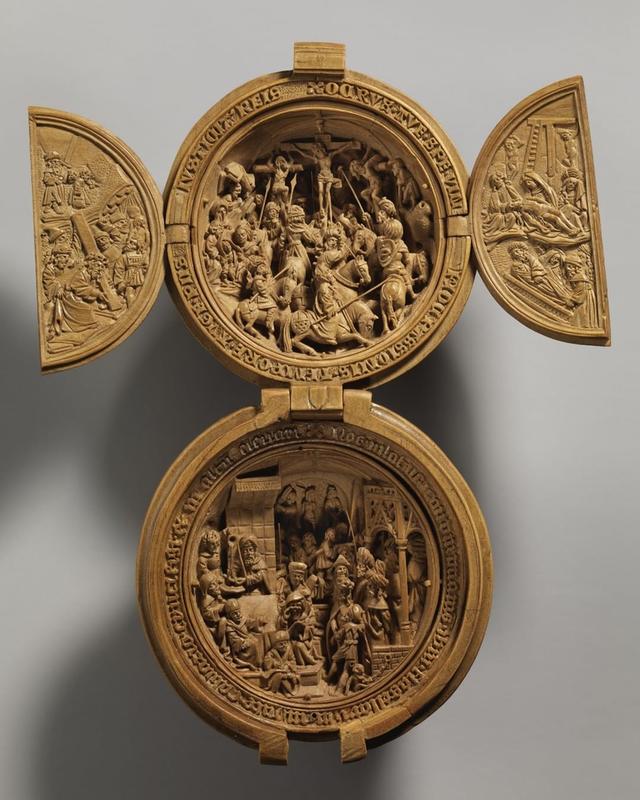
Pinterest
The level of intricacy in this magnificent wooden box carving is truly mind-boggling. It is evident that every detail has been perfected, with each piece appearing as if it took a lifetime to accomplish. According to researchers, these box carvings were once prized as symbols of status by the immensely wealthy in Europe five centuries ago. Some depicted religious scenes from the Bible, while others provided a glimpse into the daily lives of different social classes. Renowned art historian Eve Kahn further explained that these works are so exquisitely detailed that even the feathers on angel wings and the scales on dragons are visible. The carvings showcase crumbling shacks with missing roof shingles, and the robes of saints and uniforms of soldiers are adorned with meticulously crafted representations of buttons, embroidery, jewelry, and rosary beads, so small that they can only be seen under a microscope.
Giant Stone Hands Hold Up Cau Vang Near Vietnam’s Da Nang City

Pinterest
Vietnam, situated in the Eastern hemisphere, is a captivating and undiscovered destination. It boasts a remarkable blend of urban marvels like Hanoi and verdant jungles, offering tourists a plethora of attractions to explore within a short span. Amongst the country’s impressive architectural wonders is the Cau Vang Golden Bridge, a remarkable structure supported by two colossal stone hands. Created by TA Landscape Architecture, this bridge can be found atop the Ba Na Hills near Da Nang, and visitors can conveniently reach it by taking a cable car to the hill’s summit, where they can stroll past the giant hands.
Labatt Brewing Co.’s Streamliner from 1947, a valuable find

Google
During the early 20th century, the primary mode of transporting beer was through the railroad system. However, Labatt revolutionized this practice by shifting from rail shipping to utilizing road transportation. Labatt aimed to transport their beer in a more stylish manner, so they designed eye-catching streamlined billboards to carry their product from one town to another. Although trucks were eventually phased out in the 1950s, they made a remarkable comeback in the 1970s when a truck was found in London, Ontario and restored. This iconic vehicle, known as the Streamliner, gained further recognition when it appeared on a postage stamp in 1996.
Experience the charm of a stunning Victorian-era elevator from 1890
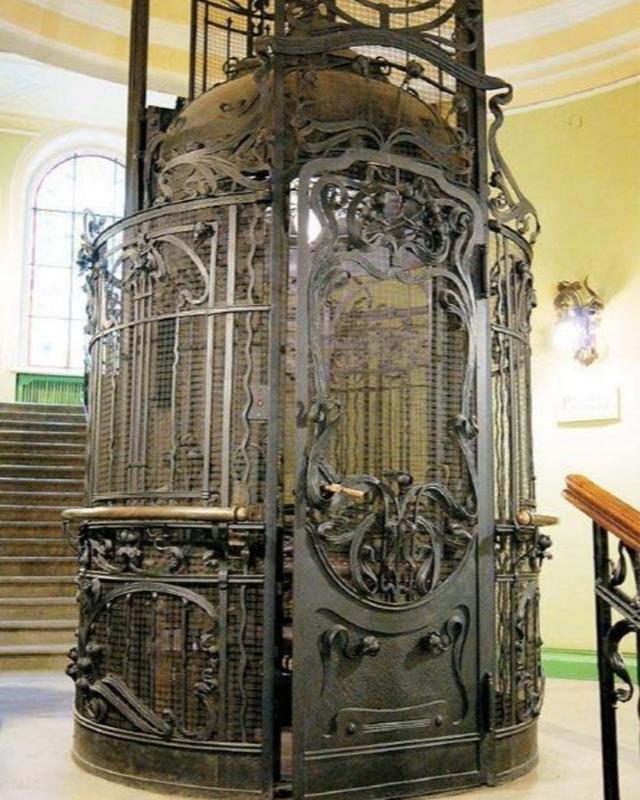
Reddit
The concept of elevators has been around since the 1854 New York exposition, when Elisha Grave Otis demonstrated a safe way for passengers to travel. By 1890, steam and hydraulic elevators became the standard, along with direct action hydraulics. In the early 1900s, Chicago installed elevators with intricate roping systems, while the Plunger Elevator Company placed almost one hundred hydraulic elevators in the John Wanamaker Stores in New York City and Philadelphia.
Leon Panetta Pledged a $10,000 Bottle of Wine as a Reward for the Capture of Osama Bin Laden

Google
After the tragic events of September 11, 2001, Osama Bin Laden, the leader of the Taliban, became the most wanted person in the western world. The primary aim was to find Bin Laden and ensure justice was served to restore the country’s honor. Interestingly, a Californian restaurant owner named Ted Balestreri took a unique approach by offering a reward for Bin Laden’s capture or demise. In a playful manner, he declared that he would open his 141-year-old bottle of Chateau Lafite Rothschild with the US Defense Secretary if they played a role in achieving this goal. When Bin Laden was eventually taken down in 2011, Balestreri expressed his willingness to open the bottle as a symbol of celebration and honor.
1920’s Toaster Emerges in Early Discovery
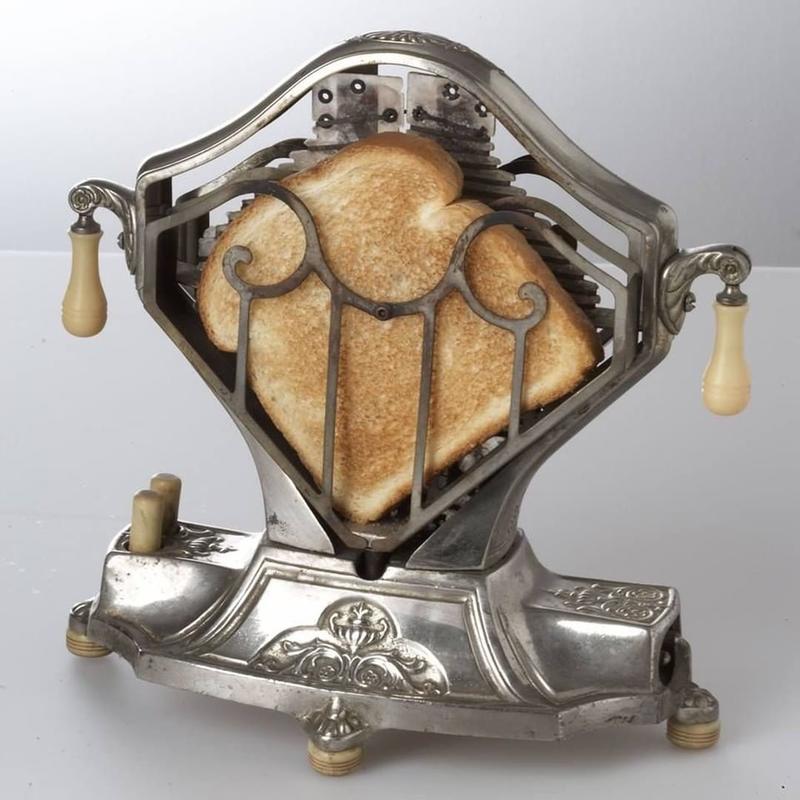
Pinterest
Is there anything more delicious than a fresh, warm slice of toast? Some might argue that it’s the greatest invention since sliced bread. With the introduction of electricity, a whole range of delightful gadgets began appearing in stores, including this early model of a toaster. While it performs the same function as the modern toaster in your kitchen, it operates in a completely different manner. Instead of toasting both sides of the bread simultaneously, this early toaster only heats one side at a time. Users must attentively monitor their bread as it reaches their desired level of crispiness before flipping it over to toast the other side.
Original toys from 1925 belonging to Christopher Robin are now showcased

Reddit
Those who grew up reading A. A. Milne’s stories about Christopher Robin’s adventures in the Hundred Acre Wood may feel a personal connection to the adorable bear and his stuffed animal companions. However, it’s interesting to note that these characters were inspired by real toys. Christopher Milne, the son of A. A. Milne, owned a collection of stuffed animals that consisted of a bear, a tiger, an owl, and a kangaroo. These beloved toys have now been donated to the New York Public Library, allowing fans to reunite with their cherished childhood friends.
Ancient Green Serpentine Stone Mask Unearthed at Teotihuacán’s Pyramid of the Sun in Mexico after 2,000 Years

Reddit
In 2011, archaeologists made a captivating discovery at the base of a pyramid in Mexico – a mysterious green mask. However, this was not the only artifact they unearthed at the Teotihuacan Pyramid of the Sun. The bounty also included pieces of obsidian and pottery, as well as human figurines crafted from the same green stone. It is believed that these objects were offerings to the gods, placed in the ground over 2,000 years ago. The placement of the mask alongside another offering suggests that it was part of a dedication ceremony.
Belgian Lace-Up Boots with Star Embellishments, Dating Back to the 1890s for Women

Pinterest
Wow, take a look at these stunning boots! The late 19th century witnessed a significant transformation in footwear, influenced by the advancements in trade and manufacturing across the westernized globe. Throughout this century, shoes became not only practical but also suitable for evening events or performances. Towards the end of the 1800s, shoemakers introduced separate shoes for the right and left feet. As technology progressed, they were able to create versatile shoes that complemented any outfit, rather than a generic one-size-fits-all approach.
In 1953, Ford Executives Choose Colors for Automobiles from a Range of 76 Scale Models

Reddit
In 1953, Ford’s top executives in Dearborn, Michigan faced the challenge of choosing the right colors for their new line of cars. They understood that this decision couldn’t be made haphazardly. Instead, they meticulously went through more than 60 scale models to envision how each car would appear in various paint jobs. Once they had a selection of colors they were fond of, they took the next step of preparing and painting full-size models. These models were then showcased in a showroom, where they underwent another round of scrutiny. Finally, after careful consideration, the executives made their final choices for the car colors.
1924: Moonshiners Utilize ‘Cow Shoes’ to Camouflage Footprints during Prohibition Era
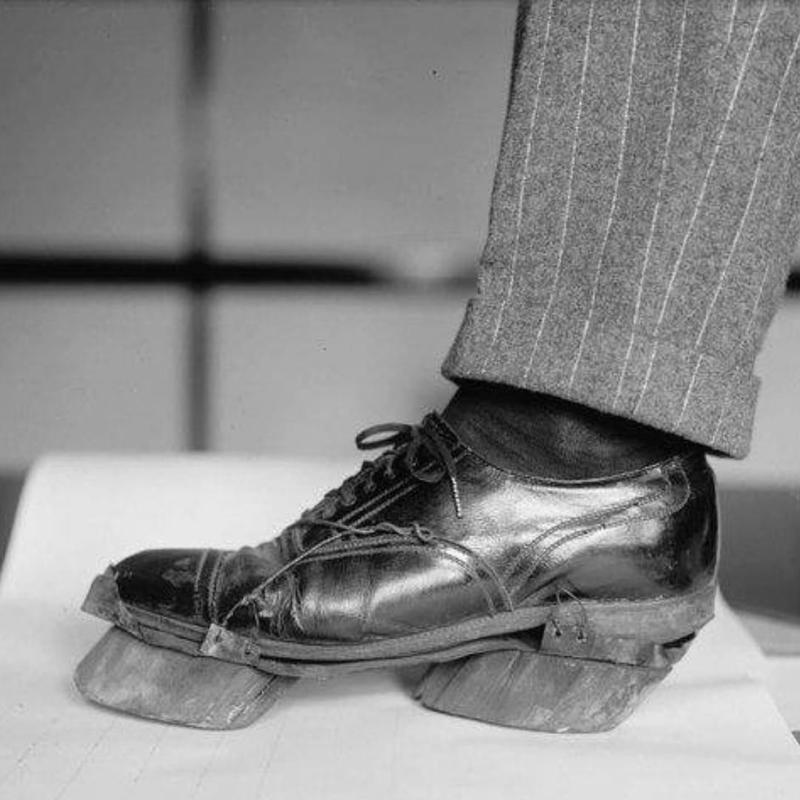
Google
During the Prohibition Era, there was a constant game of cat and mouse between moonshiners and FBI agents. Whenever moonshiners found a way to evade the FBI, the FBI would respond with force. In response, the moonshiners would cleverly adapt and change their tactics. One tactic they used to outsmart the authorities was by wearing “cow shoes.” These simple shoes had hidden compartments that transformed their footprints into cow prints, effectively disguising their movements in muddy fields. The frequency of using these shoes remains uncertain, but their ingenuity is undeniable. Perhaps you should give them a try next time you find yourself in a tight spot.
Introducing the Exceptional 1946 Tucker Torpedo Prototype II: Now Featuring a Remarkable Third Headlight
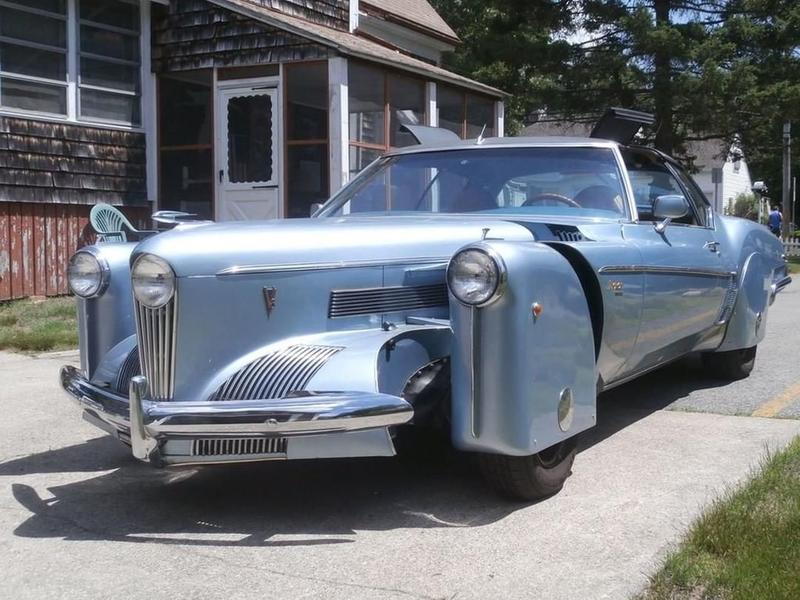
Pinterest
The 1946 Tucker Torpedo prototype II, created by Preston Tucker and manufactured in Chicago in 1948, could easily be mistaken for a prop from a James Bond film. Sadly, Tucker’s endeavor was short-lived, as only 51 cars were produced before the company closed its doors on March 3, 1949. Despite facing legal restrictions in 17 states that prohibited vehicles with more than two headlights, the Tucker boasted a unique feature – a third headlight that would automatically activate when the car was turned at an angle greater than 10 degrees. Additionally, the vehicle sported a rear engine and a roll bar seamlessly integrated into the roof, topped off with a windshield made of shatter-proof glass.
Astonishing 16th Century Ring Transforms into a Celestial Sphere
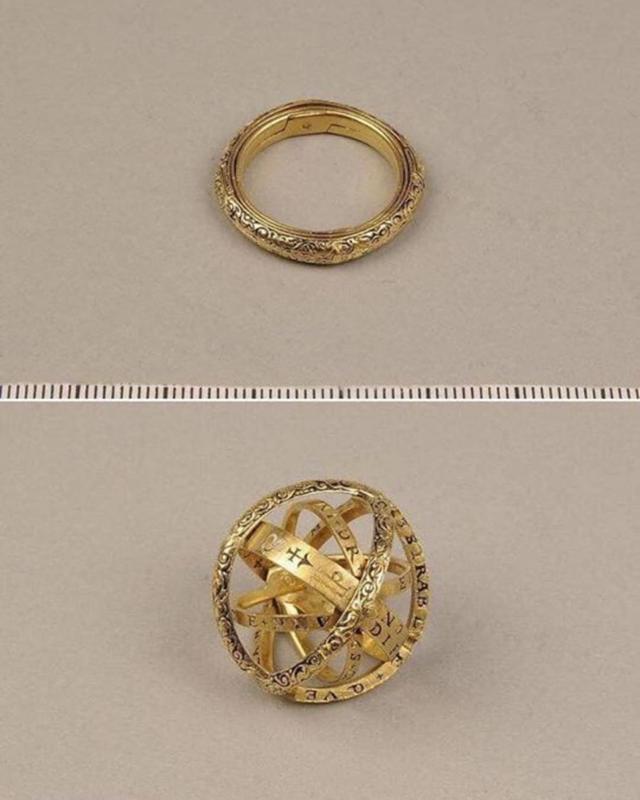
Reddit
It is truly mind-boggling to contemplate this 16th-century ring that unfolds into a mesmerizing geometrical shape. The remarkable craftsmanship required to design a ring that seamlessly fits around a finger while also transforming into a series of smaller rings is truly awe-inspiring. One can only imagine the dedication and skill the ring maker must have possessed to meticulously connect each component, likely spending days or even weeks on its creation. It begs the question: were there any prototypes that failed to connect in the same intricate manner, or did the ingenious blacksmith meticulously plan and construct the ring based on detailed blueprints?
One-of-a-Kind: Discover the Unique 1951 Studebaker Woodie Concept Car
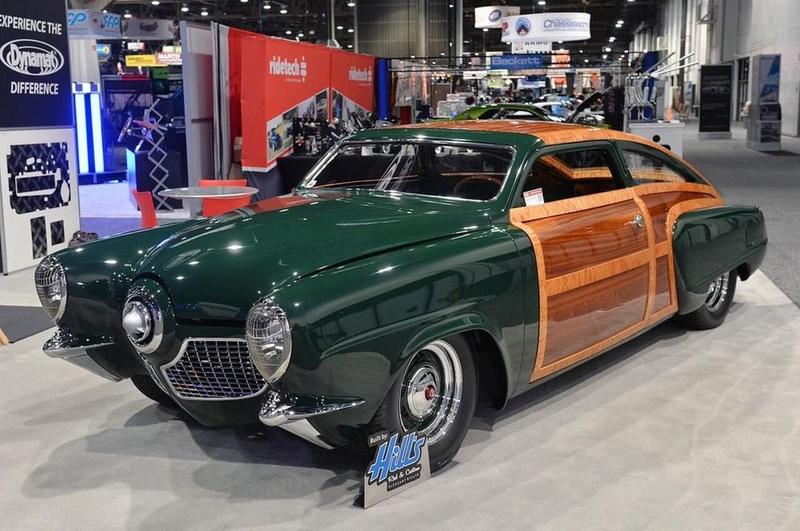
Reddit
Although Studebaker had a strong desire to manufacture a Woodie for the general market in 1951, they were unable to do so. During the early ’50s, the company employed a designer to conceptualize this remarkable vehicle, and they even put in significant effort to bring it to life. They managed to construct a prototype using a 390-cubic-inch Ford Edsel V8 engine, giving the Woodie impressive power and performance. However, they ultimately stopped at the prototype stage, leaving behind a truly exceptional, highly scarce, and customized collector’s item that has never been driven extensively, giving it the appearance of being freshly produced.
Get into the Halloween spirit with a whimsical 1930 bat lantern
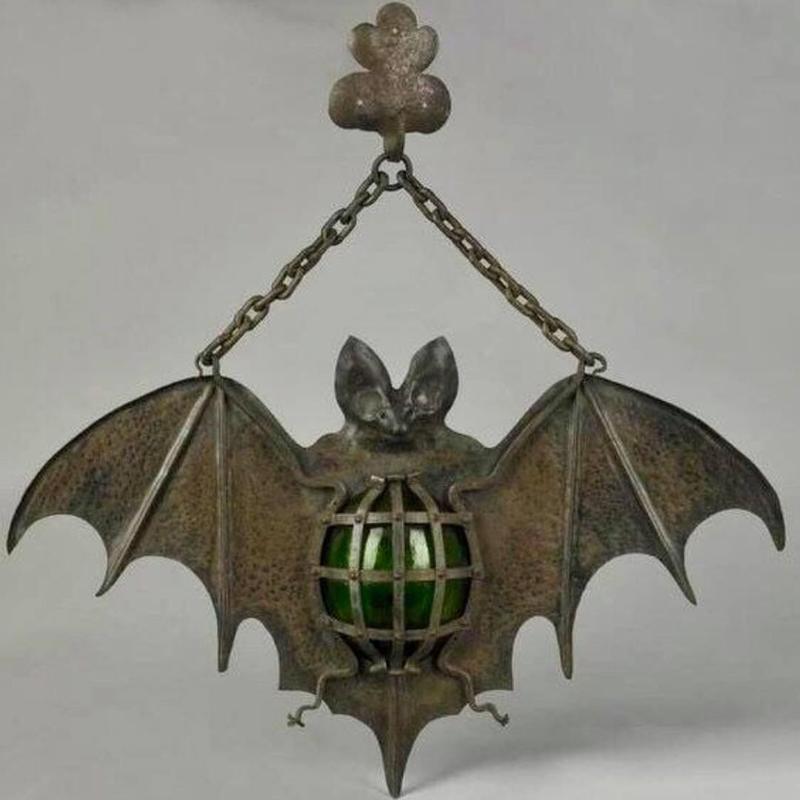
Pinterest
This lamp from the 1930s has a quirky and cute appeal. It is made of cast iron and takes the shape of a bat, making it suitable for Halloween enthusiasts or anyone who enjoys a spooky atmosphere year-round. In contrast to today’s disposable culture, families in the 1930s either crafted their own decorations or invested in lasting pieces like this lamp. Its enduring quality is evident, demonstrating that they don’t make them like they used to.
Sandstone Carved Petra, Jordan: The Rock-Hewn Capital of the Nabataeans

Pinterest
The incredible architecture of this place is an astonishing accomplishment in human construction. It is hard to believe that all of it was created solely by hand. Petra, a sandstone city built by the Nabataeans in the 3rd century BC, showcases magnificent palaces, temples, and tombs carved into the rocks. The Nabataeans, renowned for their mastery in building, were responsible for constructing this remarkable city. Unfortunately, a devastating earthquake in AD 555 caused significant damage to the beautiful town and its breathtaking views of the surroundings. Fortunately, some of the most impressive architectural structures have survived and can still be visited today.
Rare 1939 Lincoln Zephyr Coupe surfaces

Pinterest
The Lincoln Zephyr was a groundbreaking vehicle that defied its era. It combined luxury and affordability, serving as a link between Ford’s high-end automobiles and Lincoln’s more accessible K cars. These were ideal for individuals who managed to retain some wealth during the Depression without reaching exorbitant levels. However, with America’s entry into World War II, car production came to a halt, leading to the end of the Zephyr name. After the war, Lincoln resumed manufacturing, but discontinued the Zephyr branding while maintaining production of this reasonably priced car.
More From HISTORY + CULTURE
-


Rare and Revealing Photos that Challenge History
-


Revealing Forgotten Moments: Rare Vintage Photo Collection
-
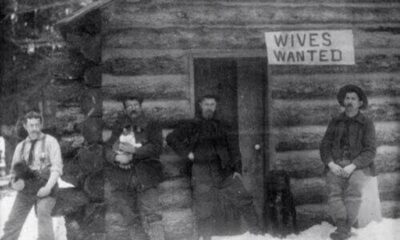

Unveiling Untold History: Rare Photos Shed New Light
-


Unearthed Gems: Rare Photos Absent from History Books
-


Perilous Professions of the 20th Century
-
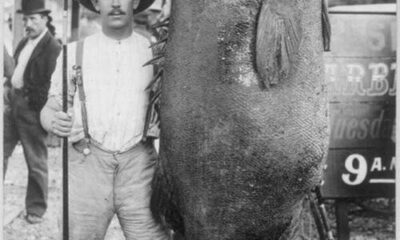

Time Traveling Through Photos: Extraordinary Images Resurfacing the Past
-


History's Creepiest Pictures and Their Chilling Backstories
-


Hidden Truths: Rare Photos Exposing History's Untold Stories
-


Rare Moments in Time Preserving History's Impact
-
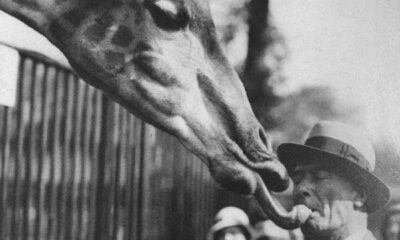

Changing Perspectives: Rare and Revealing Photos that Alter History's View
-


Eerie 'Hells Angels': Photos Uncovering a Unique Side of the…
-


Illuminating History: Extraordinary Photos with Untold Stories
